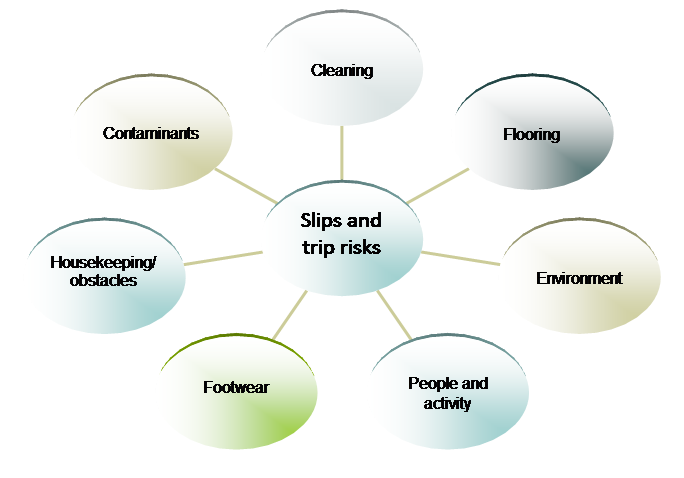In your role, understanding how to recognize, evaluate, manage, and keep tabs on slips, trips, and falls risks at your workplace is crucial. Here's guidance on each step:
Identify Hazards:To pinpoint areas where slips, trips, and falls (STF) have occurred or could occur, gather insights from your fellow workers and supervisors. Their input is valuable in identifying potential hazards. Additionally, conduct on-site inspections focusing on slip or trip risks. Refer to resources like "Preventing slips, trips and falls" or similar hazard-spotting tools. Mapping the work area layout and marking reported slip and trip incidents also aids in hazard identification. Reviewing records, including incident reports and workers' compensation claims, provides further insights.
Assess the Risk:Following hazard identification, the next phase involves evaluating the risks associated with slips or trips. Typically, these risks stem from a combination of factors. Below are key considerations:
Fix the Problem:Once risks are assessed, the focus shifts to resolving the identified issues. This entails implementing solutions to minimize or eliminate slip and trip hazards. Collaborate with your team and supervisors to address the root causes. Timely and effective problem-solving contributes significantly to creating a safer work environment.
Monitor and Review:The process doesn't end with fixing the immediate problems. Regular monitoring and review are essential. Keep a vigilant eye on the workplace to ensure that implemented solutions remain effective. This involves ongoing communication with workers and supervisors to stay informed about any emerging concerns. Periodically reassess the work area and update hazard maps to reflect changes. Continuous improvement is key to sustaining a safe working environment.
By actively engaging in these steps, you play a pivotal role in identifying, addressing, and preventing slips, trips, and falls risks, fostering a safer workplace for all.

- Use the information gathered above (i.e. from injury reports, checklist etc.) and also consider:
- how many people are exposed
- the consequences of the slip or trip – a slip or trip with or without a fall can be more serious if it occurs near hot, sharp or moving objects, or at a height, such as near stairs
- how often the situation occurs.
- It is important to have a look at all the risk factors so that the solution properly addresses the risks.
Fix the problem
Look at the assessed risks and decide what needs to be done to eliminate or reduce the risks and how quickly these control measures need to be implemented.
Importantly, using the hierarchy of control guides you to choose a solution that most effectively eliminates or minimise the risk. There are different types of control strategies to eliminate or reduce the risks. These are listed below in order of their effectiveness.
It may involve a single control measure or a combination of two or more different controls to best address the risk. Aim to include an elimination or design type of control when considering solutions.
Examples of control measures | |
|---|---|
Elimination |
|
Redesign of the environment, activity, work process or equipment |
|
| |
Engineering e.g.:
| |
Administrative |
|
Personal protective equipment |
|
To implement the most effective controls you should:
- start at the top of the hierarchy of control
- allow workers to trial controls and get their feedback before decisions are made to make them permanent
- develop work procedures to ensure that controls are understood and responsibilities are clear
- communicate the reasons for the change to workers and others
- ensure that any equipment used is properly maintained
- provide training to ensure workers can competently implement the risk controls.
Monitor and review
Control measures that have been put in place must be monitored and reviewed, and, if necessary, revised to make sure they work as planned. Check that no new measures are introduced.
You should review control measures:
- when the control measure is no longer effective
- before a change that is likely to create a new or different risk
- if a new hazard is identified
- if consultation indicates a review is necessary
- if a health and safety representative requests a review.
Refer to the web guidance for advice on managing the issues that contribute to risk including: contamination, cleaning, floor surfaces, housekeeping, obstacles, environment, people and activity, external areas, footwear and design considerations.
